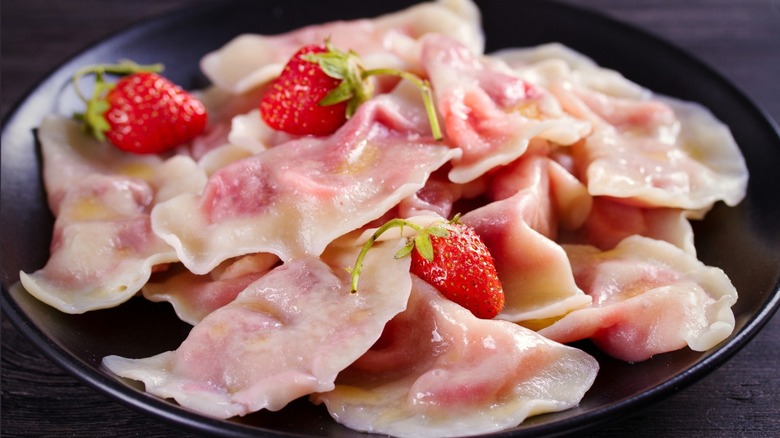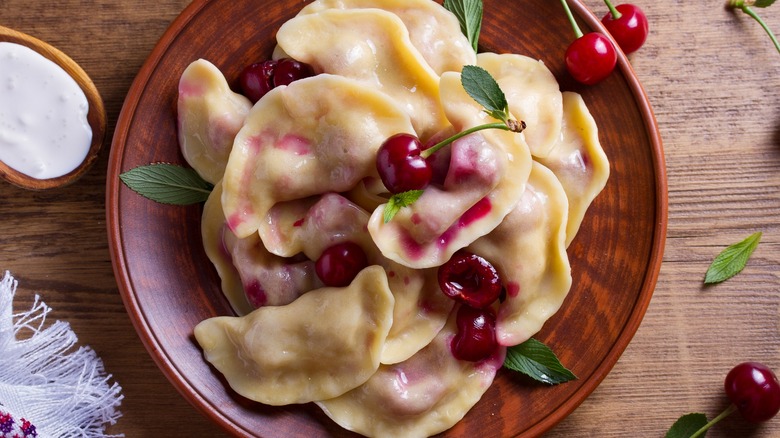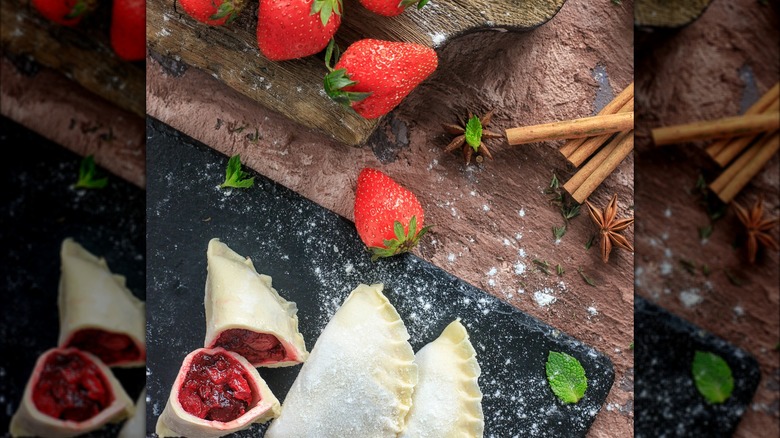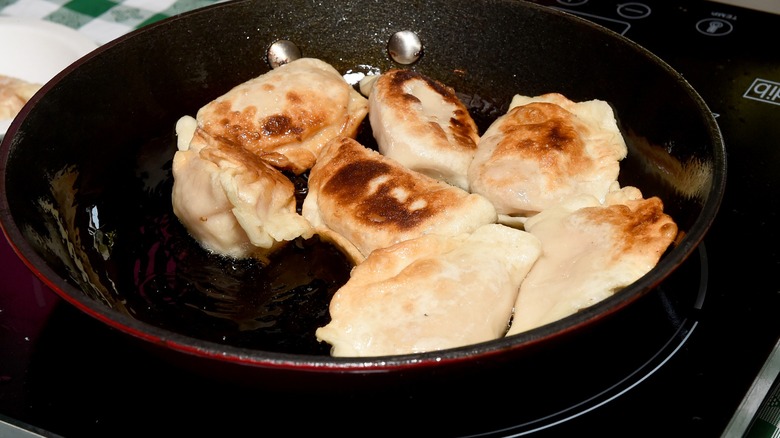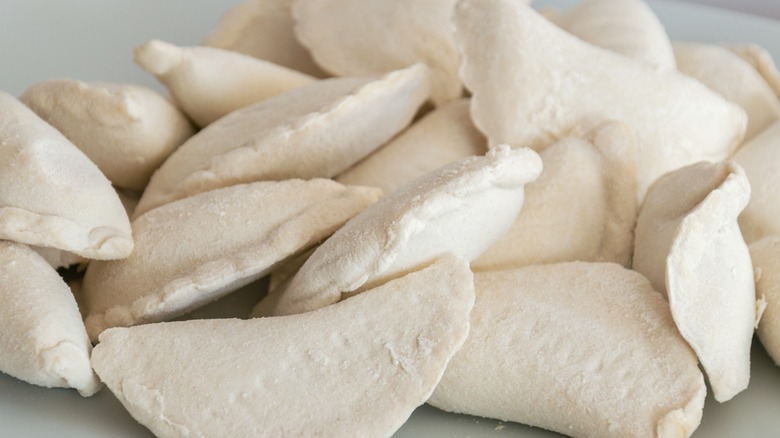Poland's Sweet Pierogi Swap Potatoes For Sugary Fillings
We may receive a commission on purchases made from links.
Chewy dough is as a top-tier vehicle for any number of fillings. Pierogi, in particular, have garnered popularity around the world for their decadent, doughy quality. This classic Polish delicacy resembles ravioli or gyoza; they feature a delicate dough wrapped around any number of fillings, though potato and cheese are the most common. The dumplings are then submerged in boiling water until cooked, and they're sometimes fried in hot oil before serving.
The BBC called pierogi, "The dumpling that comforts Poland." They're a labor-intensive delicacy that, for many, evokes nostalgic memories of family gathered in the kitchen, spending hours together getting the dumplings just right.
While they're most commonly flavored with savory ingredients like meats and cheeses, the untold truth of pierogi is that their first iterations were stuffed with sweet fillings. Anything from fruit to chocolate can go inside these dough pockets for a delicious taste of Polish comfort food.
Common sweet pierogi varieties
A pairing of starch and sweets is hard to mess up, making dessert pierogi a choose-your-own-adventure dish that can take a variety of delicious forms.
There's no rule about what can or can't go in a pierogi recipe — therein lies its beauty. For those of the sweet persuasion, the only limit is your imagination. One common variety of dessert pierogi contains farmers cheese, egg, sugar, and vanilla. These sweet-cheese pierogi are often topped with fruit, whipped cream, or cinnamon as a garnish and are a simple, sweet treat.
If cheese isn't the pierogi path you want to traverse, the dumplings lend themselves to fruit fillings as well; simply thicken the fruit of your choice with sugar and flour (if you're feeling wild, you can also try stuffing the dough with chocolate). You're then ready to boil the dumplings — and fry them, if you choose to follow that extra step.
Making pierogi
Pierogi are only as good as the dumpling itself, as the chewy dough represents the most challenging part of preparing this Polish dish. The formula is simple: Just combine flour, eggs, water, and salt. However, you must strike a tricky balance of soft dough that's just moist enough, but not so wet that it feels sticky. It must be pliable and not crumbly. For a lazy pierogi recipe, you can skip the dough-making process and instead use wonton wrappers.
After you prep the dough, it needs to rest for at least 10 minutes. You can even put your dough in the fridge for several days until you're ready to complete the process. During this time, you can start preparing your fillings. For dessert pierogi, most fillings need very little adjustment before going into the dumplings. For a fruity option, you can use fresh or cooked fruits. Thicken them with basic pantry ingredients, and voilà. If you opt to make a sweet cheese pierogi, all that's required is a quick mix of ingredients before you can cut out the dough and shape the pierogi into pockets. The last step is to boil the dumplings and, optionally, fry them.
The history of pierogi
The exact origin of pierogi is up for debate, but they were first mentioned in a 17th-century cookbook called "Compendium Ferculorum." Pierogi developed in Poland as a meal for the lower classes because the dumplings could feature any ingredients that were easily accessible. Eventually, wealthy and noble people began eating pierogi, solidifying it as a pivotal dish in Polish cuisine. Historical fillings were not the decadent cheeses and fruits we're accustomed to now; instead, people opted for kidneys and nutmeg, as well as other meat options.
Authentic Polish pierogi may have become an idea on paper in the 17th century, but there's evidence people were eating them hundreds of years prior. According to legend, Saint Hyacinth fed pierogi to hungry Polish people, and over time, the dish became entrenched in Polish culture and developed into a popular staple. Families now come together during holidays to create new shapes and flavors of pierogi.
Where to buy pierogi
Any kind of dumpling is beloved in the U.S., even if it isn't a native dish, and pierogi are no exception — you can find savory pierogi in the frozen section at most grocery stores. At Walmart, frozen pierogi from the brand Mrs. T's retail for about $3.50 per box of 12. To prep, simply boil, sauté, bake, deep fry, air fry, or grill them. This frozen option certainly cuts down on the laborious process of making pierogi from scratch, but they arguably can't compare with the homemade alternative, and you're not likely to find sweet ones at all.
Some specialty stores sell fresh pierogi, but sweet versions aren't guaranteed. Even if the fresh variety has been cooked already, heating them up is a must to activate the toothsome dumpling dough and warm the filling. Check out stores near you to find out if any offer fresh pierogi.
